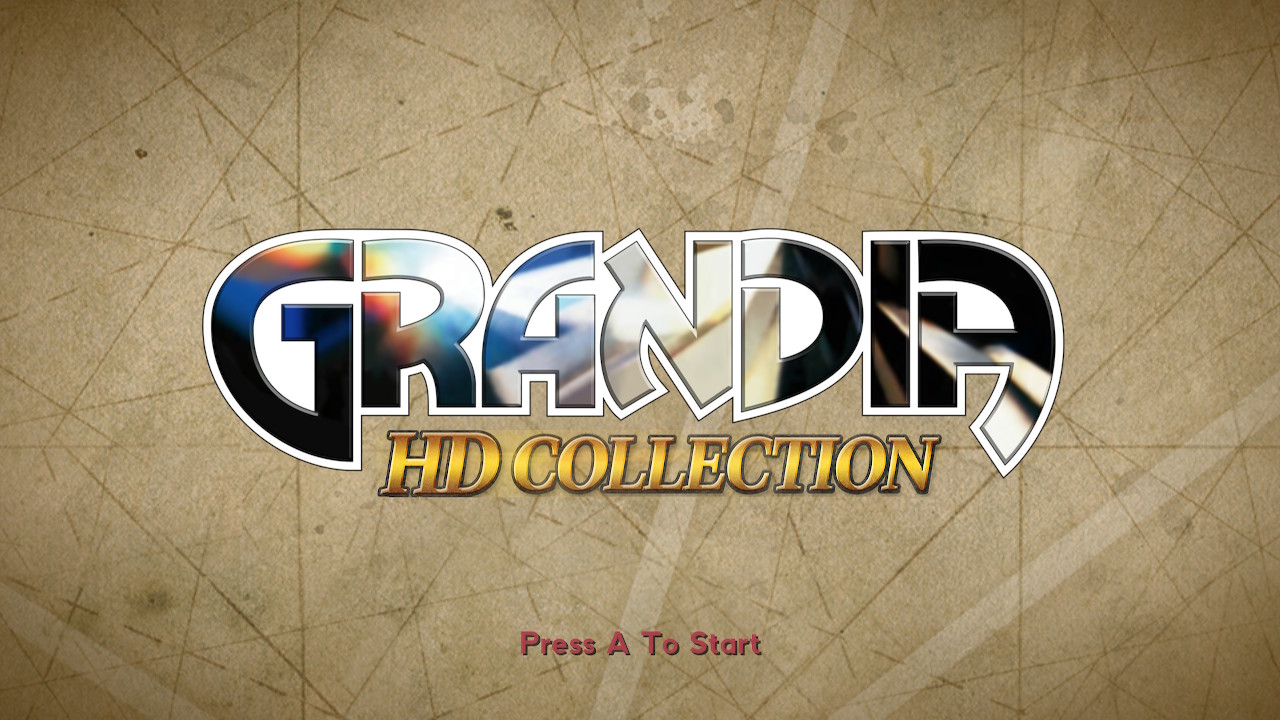Grandia HD Collection
Nintendo Switch
Developed By: Game Arts
Published By: GungHo America
Category: Role-Playing
Release Date: 08.16.19
Despite the Switch’s many charms, I don’t think I’ll ever love a specific console’s genre lineup like I love the original Playstation’s RPGs. I collected and played as many as I could get my hands on at the time, and I’ve been filling in the blanks ever since. One game that has remained beyond my reach for a while is the original Grandia – I do have the PSOne Classic digital version, but I never quite got around to actually playing it. Grandia 2, on the other hand, I have for both the PS2 and Dreamcast – I still remember opening it on Christmas morning and getting into a small fight with my brother over who got to use the PS2 first that day. I vividly remember how impressed I was by the game’s visuals at the time; sweeping, cinematic, and all in a whopping THREE DIMENSIONS – OK, 3D wasn’t a revolutionary thing by then, but the game looked great. When the Grandia HD Collection came across the review desk here at Switch Effect, I jumped at the chance to rediscover the series from the beginning. What I found was mostly what I remembered loving about Grandia 2, but I also found it in Grandia! Some things about the games feel out-of-date, but the quality of the games easily overcomes whatever deficiencies I ran into.
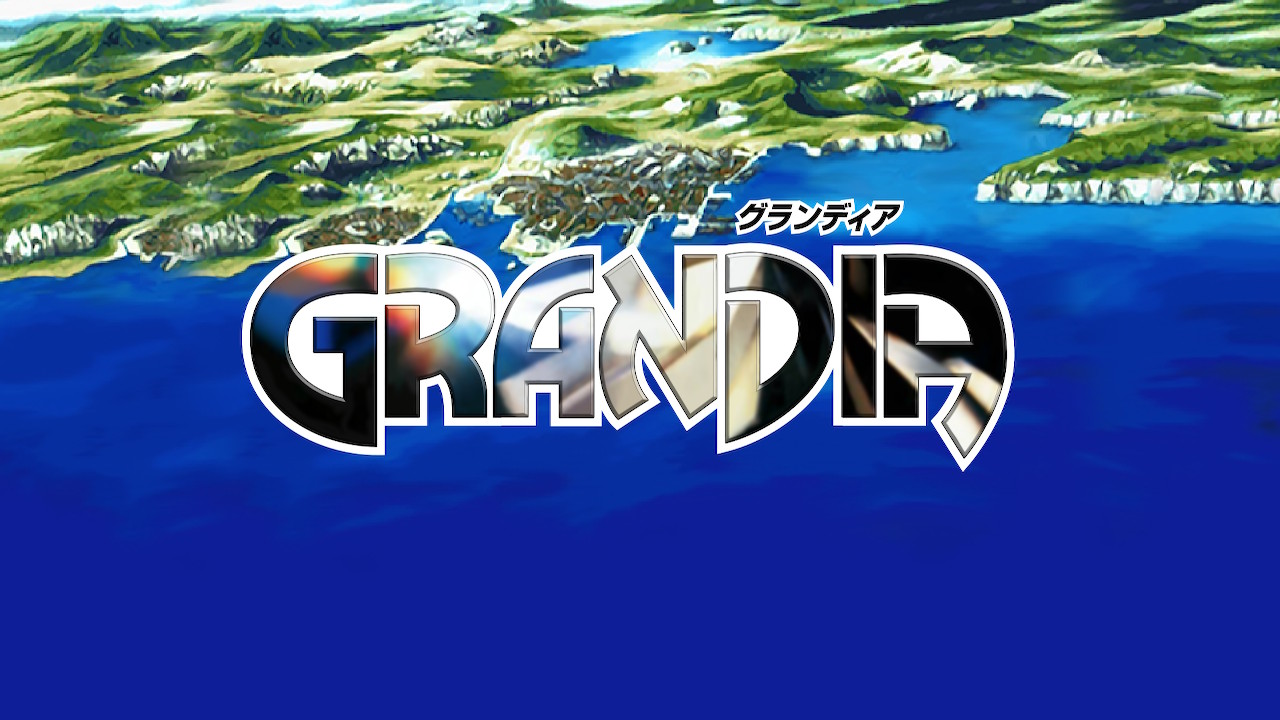
The Adventure Begins
Grandia is the story of Justin, a young man who dreams of becoming a great adventurer like his father. After sneaking into some ancient ruins with the help of his frequent partner-in-crime Sue, Justin embarks on a quest to the New World in search of the ancient Angelou civilization. He is trailed and targeted by the Garlyle forces, a large and suspicious military excavating ruins around the world in search of the final piece of ancient technology they need to execute their master plan. I don’t need to tell you that any large, private, military force with a “master plan” is probably up to no good, so we all know who the bad guys are here. Grandia is big and fun, but at times it gets a little too cartoony which lowers the stakes and reduces some of the game’s tension. Still, the game is centered around a loveable cast which more than makes up for the occasional narrative foible.
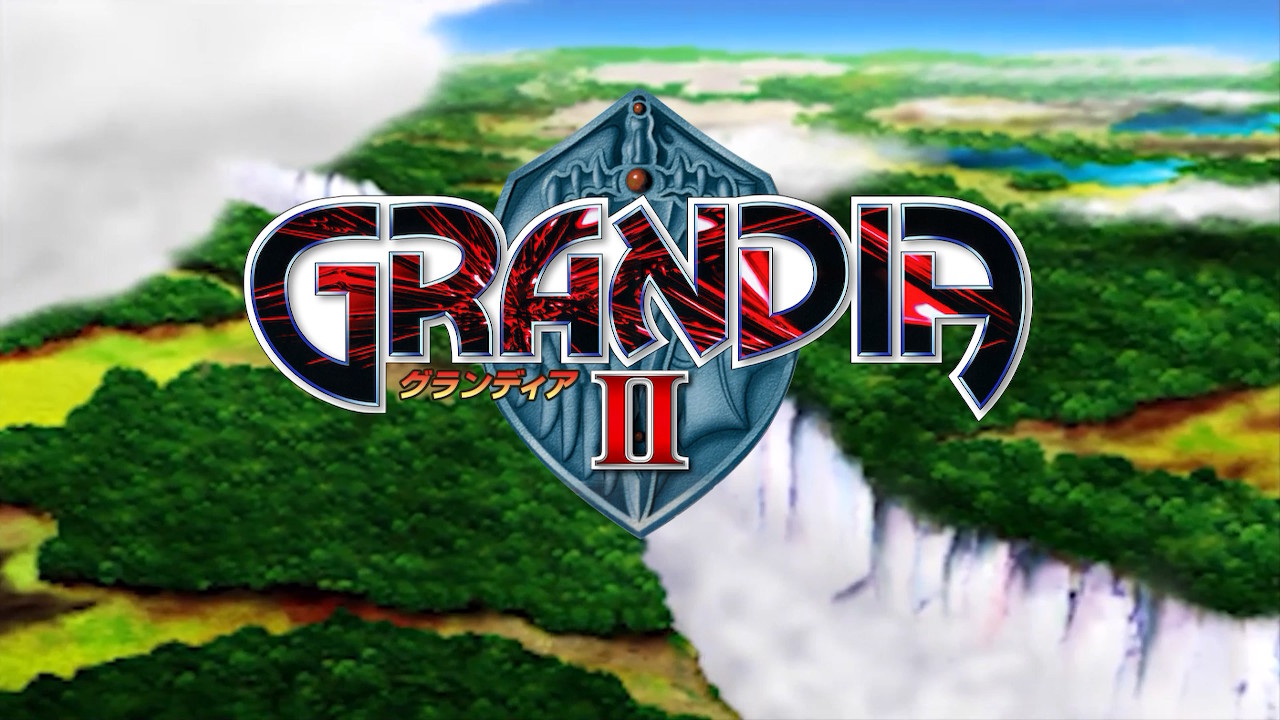
A Geohound’s Journey
Grandia 2 tells the tale of Ryudo, who makes his living as a wandering mercenary known as a Geohound. After being hired by the Church of Granas to escort a priestess, Elena the songstress, to the site of a holy ritual, Ryudo gets caught up in an ancient battle between the forces of good and evil. Grandia 2 is generally a little more serious than the first game; it decidedly gets away from the cartoonish elements of Grandia, which generally works out in the game’s favor. Things are often derailed by one minor problem: Ryudo is kind of a giant a-hole. It takes him a long time to stop being a complete douche to everyone in the party and become a relatable protagonist, but I suppose that only makes his journey that much more satisfying by the time you reach its end. But seriously; lay off poor Elena. She’s just trying to help, man!
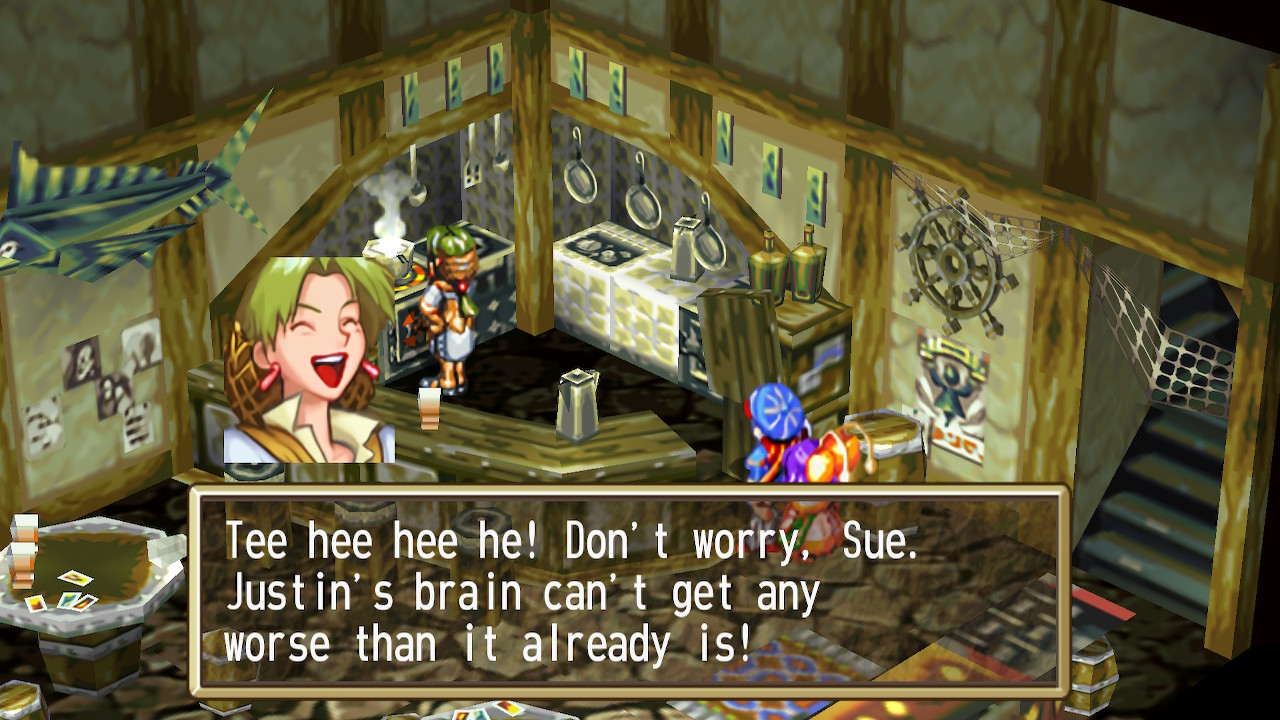
Grand(ia) Battles
Both games in the collection share the same basic battle system, which has some intriguing ideas and tries to provide a more cinematic experience than traditional turn-based JRPGs – even those with active time elements, like FFVII. Having all of your characters on one side of a screen and all the enemies on the other is a time-tested setup, but the Grandia series does its best to shake that up. You view your battles from a bird’s-eye, isometric view, and when characters take a turn they weave around enemy and ally alike to get to their target, making for a more active, engaging visual presentation of the game’s battles. This great visual element is probably the coolest, most original innovation the Grandia series makes to the JRPG formula.
Characters take their turns according to an action bar presented at the bottom of the game screen. When a combatant’s icon reaches the COM area of the bar, you can enter your command for your characters or the AI selects your foes’ actions. Depending on the action chosen, the character icon then proceeds to the ACT bar, and once the icon hits the ACT bar, the action is carried out. Certain actions, like spells or abilities, take a longer amount of time to get from COM to ACT. If a character gets hit when they’re progressing from COM to ACT, their action is cancelled, meaning that if you can get your characters set up right, you can win a fight without your enemies ever getting to take an action. For the most part, though, cancelling actions doesn’t often come into play and random battles play out a lot like most JRPGs with an active timer bar.
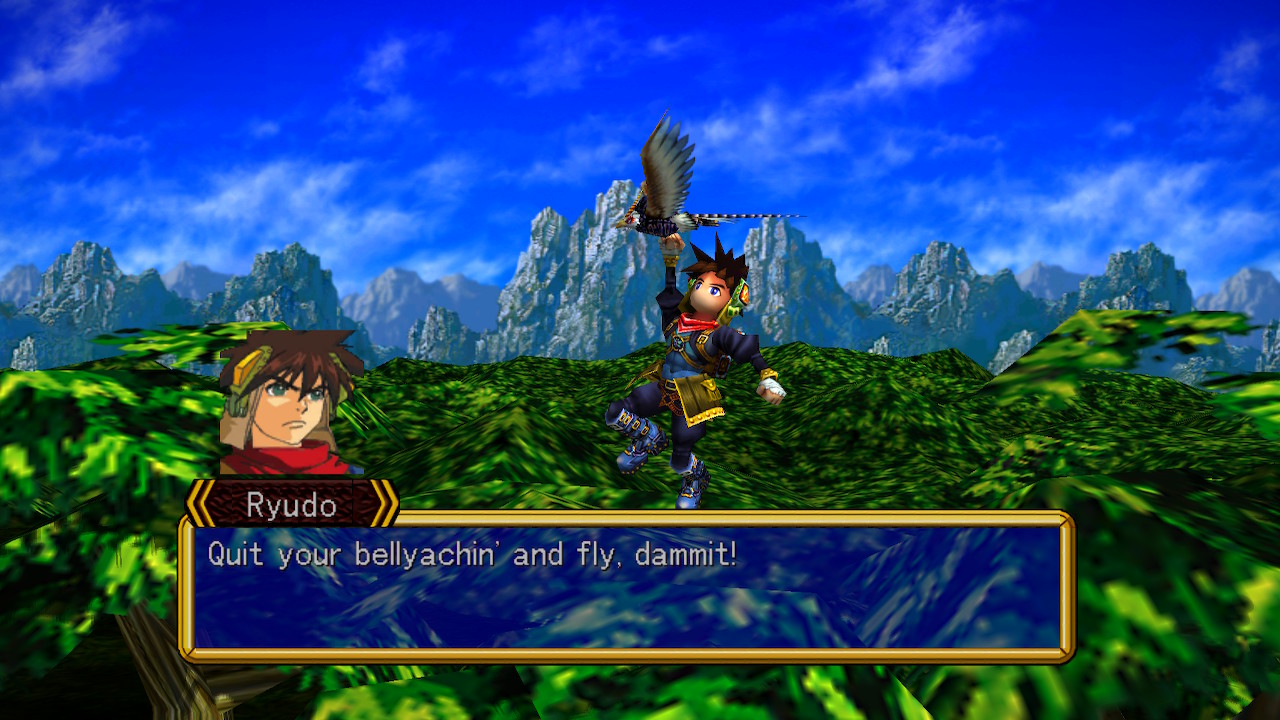
Trapped Behind Bars
The action bar is a cool idea, but its weakness is that the usefulness of interrupting enemy attacks is limited by the initial position of characters on the bar at the beginning of a battle. If your action comes around before the enemy gets an action, you really can’t interrupt them at all. The reverse is perhaps even more frustrating; if your enemies get into a position where they’re able to cancel your attacks repeatedly, you can suffer a lot of damage in a short amount of time. It gets especially frustrating when there are a lot of enemies in a battle; when your characters keep getting hit and losing progress on the action bar, you pretty much just have to sit there and watch your characters lose their turn with no way to do anything about it. Perhaps I’m missing some vital element of the battle system, but I found that the cancel effect actively worked against me more than it created useful opportunities in the game’s toughest battles.
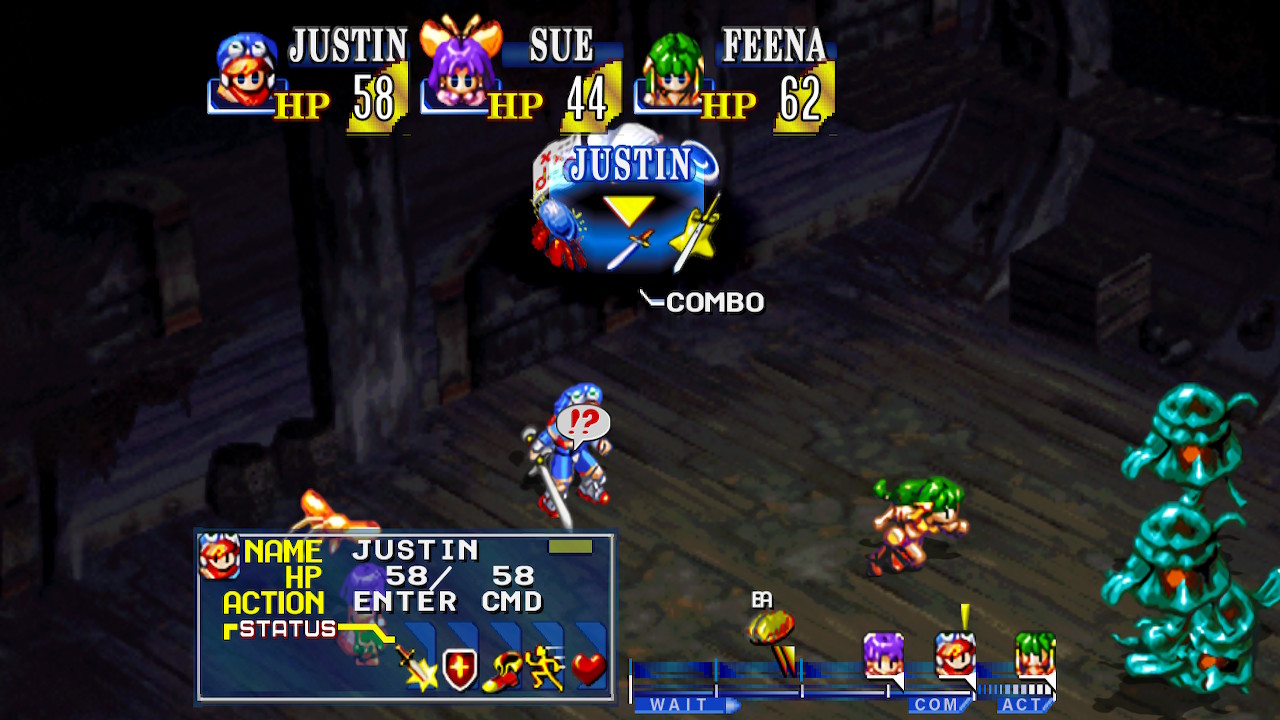
Skilled Adventurers
Grandia’s skill progression system is based on using your abilities; you get points to level up your skills every time you use a weapon or cast a spell. This is a cool way to do things when you control a single character, like anything Bethesda publishes, but it’s more problematic in party-based battles. If one of your characters is too slow, your other teammates will always act first, meaning the slower character might not even get a turn! If they don’t act, they get no skill points, so how are they supposed to progress? So that creates a situation where grinding takes forever, since not only do you have to walk around getting into fights, but you also have to make some of your characters defend to make sure a certain character gets a turn.
Grandia 2’s skill progression system is based on collecting magic and skill coins. You can use these coins to purchase and upgrade new skills, abilities, and spells. It’s a lot more flexible than the first game’s system, and it gives the player more control over their characters’ progress. You’ve still got to grind sometimes, but collecting coins is a more equitable way to distribute skill points. You don’t have to go out of your way and make battles longer than they have to be to make sure a certain character gets to take an action. It makes for a more streamlined experience overall, without sacrificing depth.
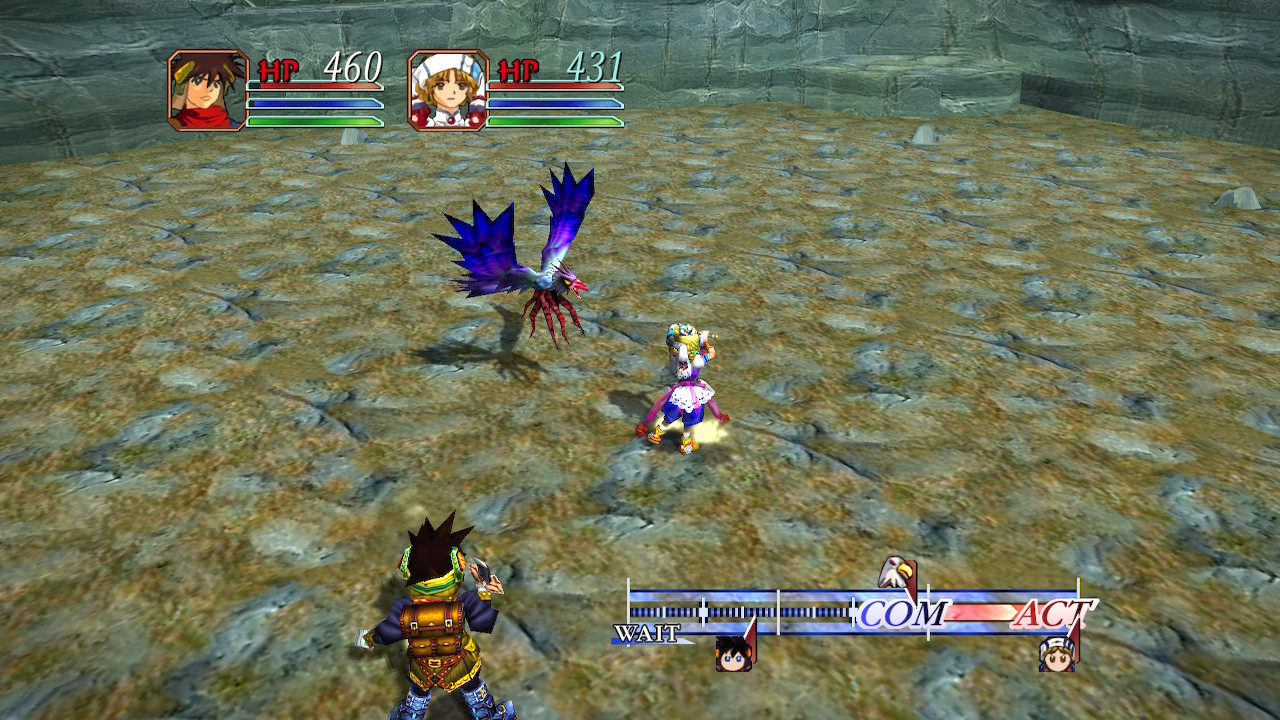
You Can Remaster More Than Graphics
The Grandias are a cool blast from the past, but the gameplay concepts are a little dated and the Grandia HD Collection could have used some quality of life updates present in other HD remasters. Most notably, I would have loved a speed-up function like the ones present in Square-Enix’s recent Final Fantasy remasters. This could have made up for the lack of a lot of features JRPG players have gotten used to over the years, such as minimaps and a reduction in focus on grinding. The lack of a tutorial also hurts the first game; it originally came with a manual to teach you how the game’s systems worked, but that’s not present in the game. Some equipment says it affected characters’ IP; IP is not a stat present on the status screen in the menu, and it’s never explained anywhere in Grandia. I had to run to Google to figure out what it was. A digital manual or something similar would have been a welcome inclusion to the game to remedy this situation.
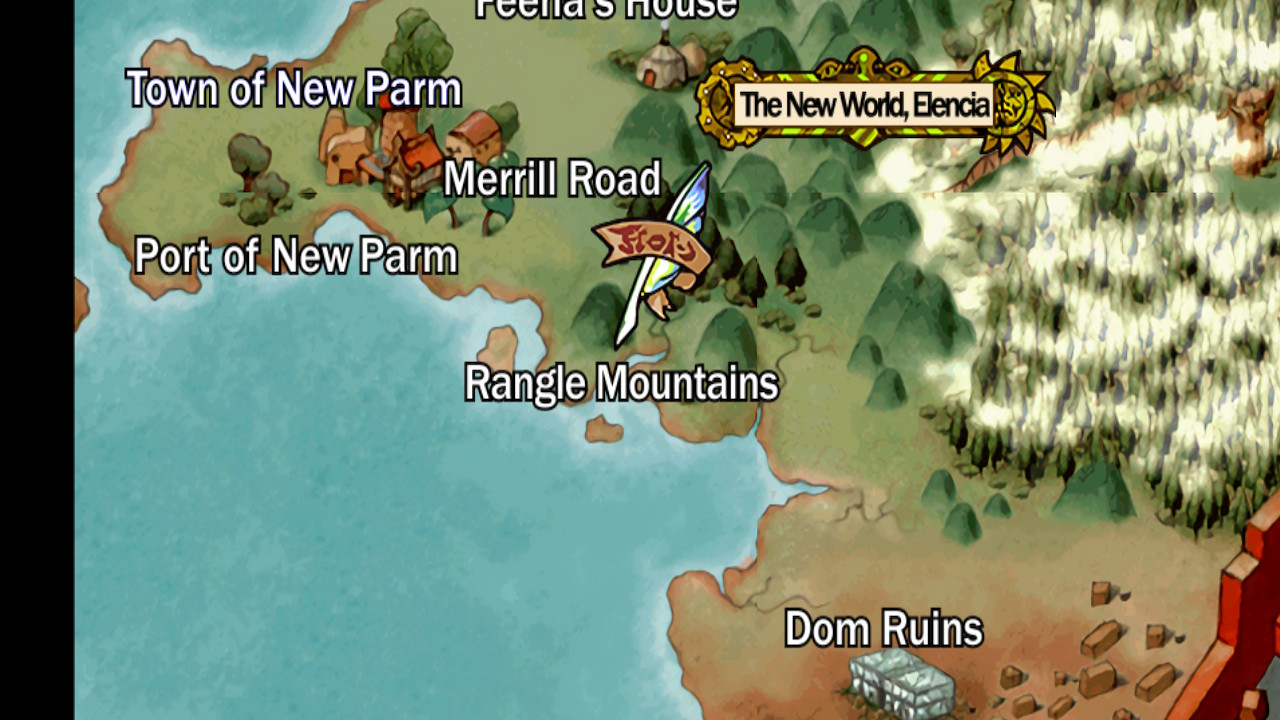
Grandiose Graphics
In a surprising twist, I think Grandia is actually the better-looking of the two titles; Grandia 2’s 3D graphics look way smoother than they do on either the Dreamcast or PS2, but the low-poly 3D character models can only be made to look so pretty. It looks like an old game that has had a graphical overhaul – which is what it is, so I don’t suppose I can take points off for that. However, the 32-bit sprites of the first game translate much better to the HD remaster; it fits right in with many of the top-of-the-line retro-inspired, pixel art games of today.
But what strikes me the most about the graphics – and this applies to both games – is the cinematic quality of the camerawork in the in-game cutscenes. Both games in the collection are chock full of grand, sweeping shots that capture a sense of scale and wonder not often seen in games of their respective eras, particularly when you enter a new area and the camera does a slow, overhead pan of the entire town or dungeon or wherever. In an unfortunate contrast, the pre-rendered cinematics in Grandia 2 don’t appear to have been remastered – especially the traditionally animated, anime-style cutscenes. They’re pixelated and look to be of a way lower resolution than the remastered portions of the game. Considering how great the rest of the games look, it’s a bit disappointing that some of the most important moments of the game are presented in a much lower level of quality.
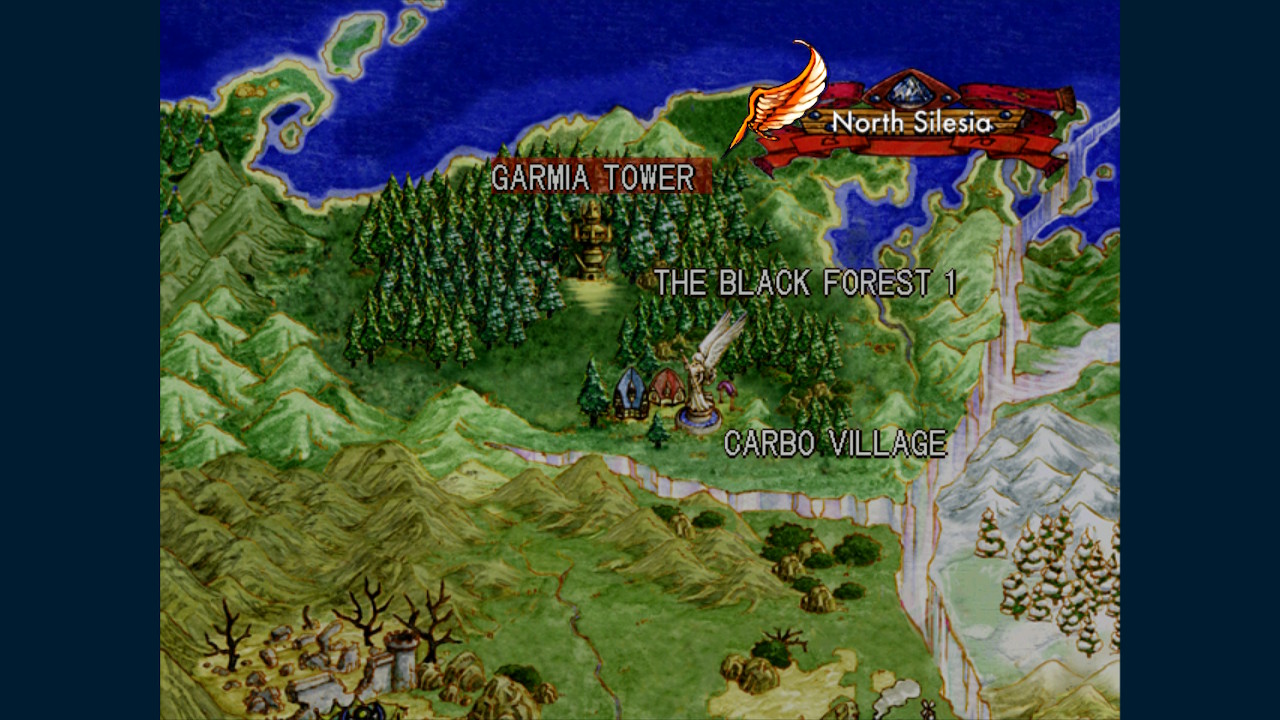
This Is What The 90’s Sounded Like
The musical score is pretty much exactly what you’d expect from JRPGs from the PSX/PS2 eras. In Grandia, the music is an orchestral-sounding collection of MIDI tracks that raise spirits and create a sense of adventure that fits perfectly with the game’s themes. Grandia II’s story has slightly darker themes, and that carries over into the soundtrack. I think I personally prefer the more lighthearted tones of the first game, but in terms of objective quality (inasmuch as there is such a thing in art) they’re fairly even. They share a composer in Noriyuki Iwadare (also of Lunar fame), so that makes a ton of sense.
In what is becoming a bit of an overused device in this review, the games also share the same low point in terms of their audio tracks. The games retain their original English voiceover tracks, which is something I think I’d have preferred they changed. I don’t know who was directing these games, but every line in the game from every different character is delivered in the same slow, plodding manner, regardless of the urgency present in the scene. Many of the game’s jokes are butchered by poor timing and delivery, and the voiceover is just generally cringeworthy more often than not. The general audio quality of the voices is also poorer than the game’s music or sound effects; everyone sounds faintly like they’re talking into a tin can. Luckily, only certain scenes are voiced. Unluckily, those scenes tend to be the most important to the story, and you can’t skip to the next text box until the VO finishes in both games. Or you can just choose the Japanese voice option – I guess that works, too.
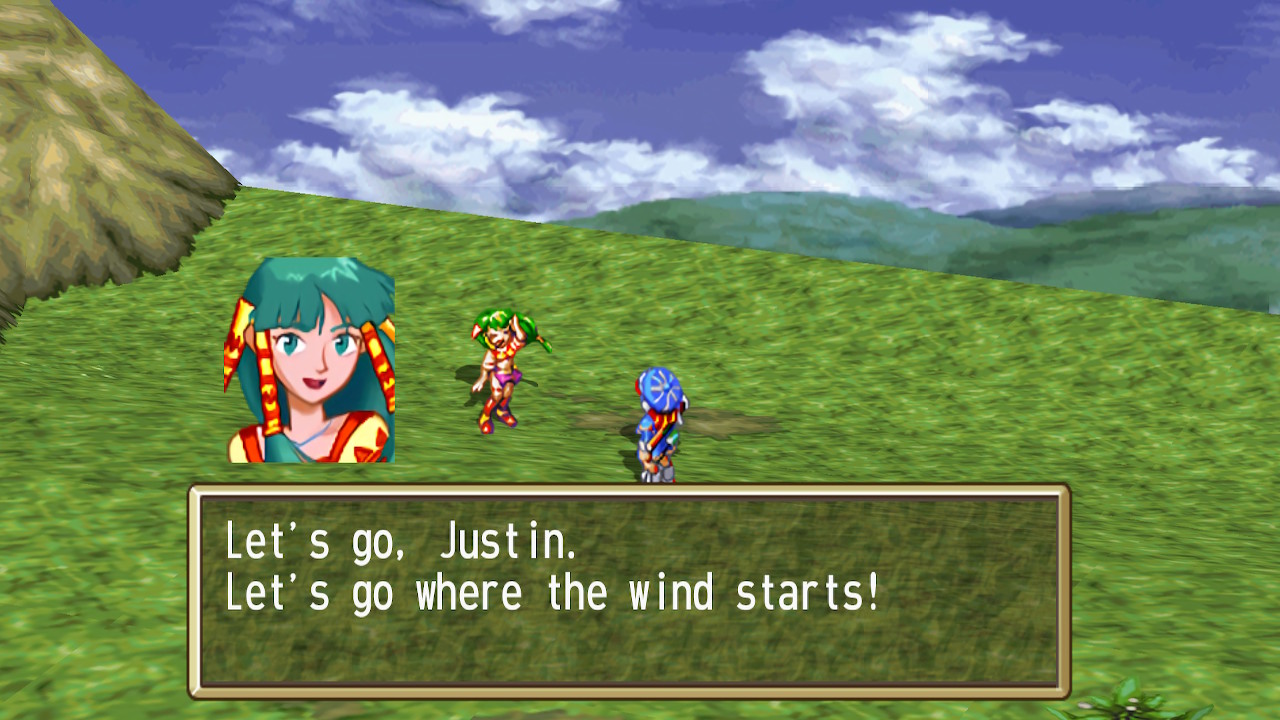
Playability
Touch and motion controls didn’t exist in the PSX or PS2 eras, so neither is present in the Grandia HD Collection. They wouldn’t have added anything to the experience, so it’s not really any kind of loss. Grandia looked equally great on my TV and the Switch’s handheld screen, but Grandia 2 actually looked a little bit better undocked than it did on a bigger screen. I think that the graphics being presented in the smaller surface area smoothed over a lot of the somewhat outdated-looking 3D sprites. It did make the text a little small, but hardly the worst I’ve ever seen. I think overall, however, it’s worth playing both games on a TV at least for a little while to take in the full effect of the sweeping camerawork.
TL;DR: Great update of some classic JRPGs that could maybe use a few quality-of-life tweaks, but overall preserves and enhances everything that made the games great in the first place.





Buy Grandia HD Collection
$39.99
Follow Game Arts
Follow GungHo America

A code was provided to The Switch Effect for review purposes.
[Review] Backpack Hero – Nintendo Switch

Developed By: Jaspel Published By: Different Tales Category: Role-Playing, Simulation…

